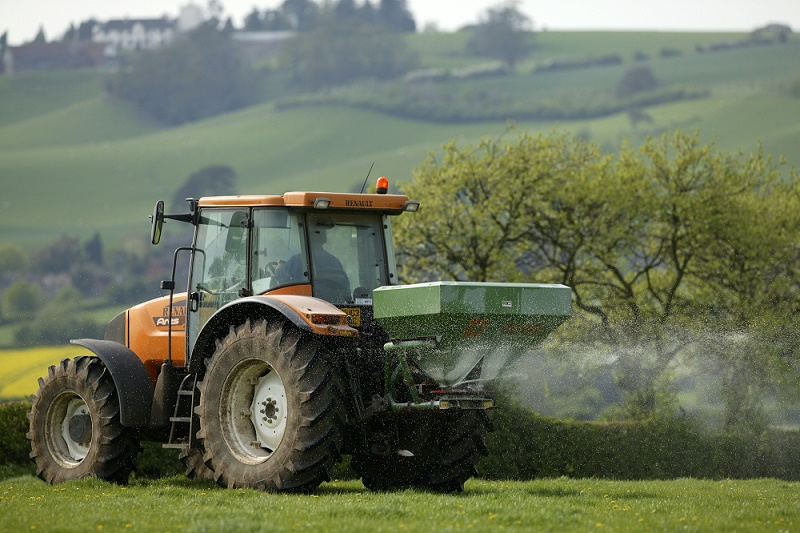Paddock fertilser application
Friday, 27 March 2020
Waterlogged swards need a kick-start this season. Grazing managers who rely on their usual fertiliser rates could see disappointing growth rates. Paddocks that were flooded, or severely waterlogged, over winter need rejuvenation, followed by higher nitrogen and sulphur applications.
Prolonged flooding can wipe out perennial rye-grass, cap the soil and wash nutrients deep into the soil profile. Any nitrogen applied in these conditions wouldn’t be used efficiently, warns Dr George Fisher of CF Fertilisers. He, therefore, recommends paddock rejuvenation, followed by increasing fertiliser rates until mid-season, then reassessing conditions. “I’ve seen a lot of flooded fields that look green, but that’s due to annual meadow grass: the rye-grass has been killed. So it’s important to get out and look at how much rye-grass is in the sward and if it’s below 60%, consider reseeding,” he explains.
Dr Fisher advises a spring reseed rather than holding off until after a couple of grazings or a silage cut, citing the lack of production from a meadow-grass-dominated sward. Simple surface capping, however, can be remedied by spike aeration, allowing air into the soil and improving nutrient use by the grass plant. Chain harrowing will help disperse any debris or silt from river or sea flooding. “If you are worried about the state of the soil, a gypsum application at 2.5 t/ha will rectify it. But think before just applying your usual fertiliser: there is no point if you haven’t got the right soil structure or grass species to use what you put on.”
On very wet fields, Dr Fisher thinks both nitrogen and sulphur will have drained out of the soil profile. Recent soil samples from arable fields have revealed that nitrogen has been washed deeper than 30 cm. Grass roots can’t access this quickly. “Normally, we would be spreading 20–30 kg N/ha for rotational grazing, plus 10–15 kg/ha sulphate. But this spring we are thinking 30–40 kg/ha N and 20 kg/ha of sulphate will be needed to make sure that grass is fed. You can’t rely on nitrogen from last season,” he points out.
Another challenge that could pop up later in the season will be weed control, as river flooding can deposit a lot of weed species, which will take hold in poached areas or where poor residuals have opened up swards. Dr Fisher says it’s important to keep an eye on such swards and be prepared to treat.
Good managers who are walking paddocks and measuring weekly will soon know if their grass has run out of steam – looking yellow but with lush green growth around dung patches. Yet Dr Fisher is keen to encourage action now to avoid this; correcting it will be a lost opportunity for optimising growth rates and intakes. “It is a short-term issue and we suggest putting on readily available nitrogen, not slow-release urea,” he adds.

Topics:
Sectors:
Tags:

